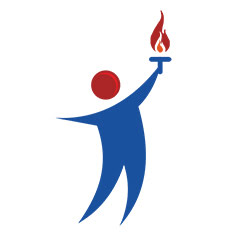
Announcements

Announcements



LOGO stands for Language of Graphics Oriented. It is a language for functional programming on computers. An artificial language called LOGO was created to represent calculations made by a machine, especially a computer. It is a modification of the Lisp language. Programming languages are mostly used to write code that commands a machine's actions, expresses the functionality of algorithms, or facilitates human communication.
However, a logo is also used as a symbol to identify a business or corporation in the public eye. An abstract pattern or a symbol depicting a wordmark might be used as the logo. Generally, a company's name, trademark, or brand can be represented by a logo on a global scale.
The company that uses HP as its logo is a global representation of Hewlett-Packard.
A coin's emblem also denotes the nation to which it belongs.
When coins were first used as a form of payment in the 6th and 7th centuries (around 600 BCE), the logo was created. Every coin has an inscription indicating the nation or kingdom to which it belonged. Cylinder seals were also made with a logo in the early days (c. 2300 BCE).
Logos, which symbolised kingdoms or dynasties, were shaped like animals, birds, or any other symbol and imprinted in coins or textiles throughout the 6th century. By 1890, around 700 lithographic printing companies and about 2000 workers were employed in the US.
In the early 1700s and early 1800s, logos evolved into printing technologies, watermarks, and silver hallmarks. In the late 1800s, the introduction of photography and lithography into the advertising sector aided the global adoption of logos. In 1876, the Bass red triangle became the first trademarked logo.
Monogram logos
Wordmarks
Pictorial marks
Abstract marks
Mascots
The combination marks
The emblem
You can get in touch with our expert counsellors at MOEC if you wish to study abroad!
Talk to our Counsellors
A logo represents a company and offers it a distinct feel and identification through the use of typography and imagery.
This consists of letters, usually brand initials, such as HP, WB, HBO, LG, etc. These are the initials of famous businesses. With just two or three letters, they have identified their brand globally. Since these are just initials utilised in this instance, the design of the font in which these letters are printed matters greatly. When printed on business cards or any other medium, it should be readable and visually appealing to draw attention and improve promotion.
This font-based logo design highlights the name of the primary corporation, such as Nescafe, Disney, Canon, or Google. The actual company names are displayed in a variety of fonts and styles to give them a visually appealing appearance.
This logo is based on visuals or icons. The brand can be recognised just by looking at the image, such as the Twitter bird or the Puma panther. These companies are so well-known and well-established that all it takes to identify them is a single image. The most difficult decision, in this case, is which image to use and what colour to use, as the company's reputation and very existence depend on it.
This abstract mark or design is called a pictorial logo. It could be a geometric abstract shape that represents your company. For example, Chanel coordinates between one correct C and another C in the opposite direction. These abstract mark designs are effective because they reduce the company or brand to a single, distinctive image. The abstract image is chosen so that it can symbolise the message that the firm or business wishes to convey with its symbol.
A mascot logo is a cartoon or colourful character that serves as an ambassador for the brand. For example, the McDonald's Joker and the Pringles cartoon face with a moustache and bow tie make the environment inviting and visually appealing for kids and families.
This blends a wordmark or letter mark with an image, abstract mark, or mascot mark. Two examples of this are Lacoste, which mixes a wordmark with an image of a crocodile, and Red Bull, which combines a wordmark and an image of a bull. These logo kinds combine to create a dynamic combination that raises the brand's worth and draws us in.
The emblem logo consists of an icon or symbol free of wordmarks or letters, such as seals, coins, and badges. In spite of their historic appearance, these emblems are frequently chosen by government agencies, colleges, and institutions. Even the automotive industry likes their timeless look. For example, the BMW badge, which resembles an emblem, or the Oxford University emblems, which are distinctive in and of themselves, serve as examples.
The programming language LOGO was created primarily as a tool for teachers. A form of Lisp, a functional programming language, is called LOGO. The LOGO language is modular, expandable, versatile, and interactive. LOGO's primary goal is to educate kids about programming using easy-to-follow procedures and instructions. Typically, LOGO is used as an interpreting language.
In 1967, Wally Feurzeig and Seymour Papert founded Bolt, Beranek, and Newman (BBN), a research organisation located in Cambridge, Massachusetts, where they initially developed LOGO. The intellectual foundations of LOGO are found in developmental psychology, mathematical logic, and artificial intelligence. The LOGO language permits the use of virtual Turtles for debugging and instant visual feedback.
In 1969, the first functional turtle robot was created at MIT. The real floor turtle comes after a display turtle. The fundamental ideas behind the original turtle have not much altered from the current LOGO model. The initial turtle was not wireless or controlled by a radio; rather, it was a floor roamer that was tied.
LOGO was first intended to be a tool for teaching kids how to learn, a skill that is still crucial in today's world, rather than for producing software of the highest quality for the industry. The industry has required a number of new language components that have no bearing on helping in learning. While many other languages are created with abstract computer science concepts in mind, LOGO is created with human learning in mind.
LOGO's main beliefs are that learning should take priority over teaching in the classroom and that learning is most effective when students are mentally working on a construction project. The LOGO language is intended to be used as a tool to investigate concepts in fields like intellect, music, art, and language rather than as a subject to be learned.
Programming is made simple using LOGO as soon as the LOGO environment launches. Each command you input will be executed instantly, providing quick feedback on whether the command accomplished the desired result or not. The relationship LOGO has with Turtle Graphics is an additional benefit. In essence, turtle graphics is a set of straightforward yet effective commands for working with a turtle-like screen object.
Turtle graphics' primary concept is programming; you give a turtle instructions, and it follows them to move around the screen and draw lines wherever it goes. The computer can be programmed to draw a line on the screen with a few keystrokes. FD 100, for instance, signifies "turtle, take 100 steps forward." This kind of additional programming is what makes it possible to program the computer to create whole images.

Contact MOEC Experts for Study Abroad Guidance!
By using our site, you agree to our use of cookies.

Hurry up before admissions close.


Post Comment